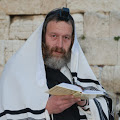Trusting the Power of your Amulet
 Rabbi David Azulai
Rabbi David Azulai
Jewish Kabbalah and Protective Talismans
Introduction
The Jewish mystical tradition of Kabbalah holds a profound place within the spiritual practices of Judaism, offering deep insights into the nature of the divine, the structure of the universe, and the hidden connections between the physical and spiritual worlds. One of the most intriguing aspects of Kabbalah is the use of amulets—kame’ot in Hebrew—which are imbued with divine power to protect the wearer and draw blessings into their life. These amulets, deeply rooted in Jewish symbolism and sacred texts, are designed to act as protective talismans, warding off malevolent forces, including the ayin hara (the evil eye), and channeling divine energies for the wearer’s benefit.
This article will explore the significance of Jewish amulets within Kabbalistic tradition, the protective power they hold, and why trusting in the power of these sacred objects is an enduring practice for many in the Jewish faith. We will focus specifically on the connection between Kabbalah, protective talismans, and evil eye protection, examining the spiritual mechanisms that make these amulets effective and meaningful.
The Roots of Jewish Amulets in Kabbalah
Amulets have a long history in Judaism, and their use is intertwined with the development of Kabbalistic thought. Kabbalah, which emerged in the medieval period, is primarily concerned with uncovering the hidden layers of meaning within the Torah and understanding the flow of divine energy through the ten sefirot (emanations) of the Tree of Life. For Kabbalists, the material world is an expression of the divine, and specific objects, words, and symbols can serve as conduits for spiritual power.
The use of amulets in Jewish tradition dates back to ancient times. References to protective charms and symbols can be found in the Talmud, where items like engraved stones or written prayers are mentioned as means to guard against danger or illness. However, it was the rise of Kabbalistic thought in medieval Jewish mysticism that gave these objects a structured spiritual framework, allowing them to be used as effective tools for channeling divine protection.
Kabbalistic amulets often incorporate sacred names of God, angelic forces, and specific combinations of Hebrew letters, which are believed to carry metaphysical power. These symbols are not arbitrary but are rooted in the understanding that the Hebrew alphabet itself is a reflection of divine creative forces. By arranging these letters in certain patterns, Kabbalists believe that one can access the divine energy they represent, thus imbuing the amulet with protective and transformative power.
The Protective Power of Kabbalistic Amulets
At the heart of any Jewish amulet is the belief in its ability to act as a protective talisman—an object that shields its bearer from harm, be it physical, emotional, or spiritual. The power of these amulets is thought to come not only from the physical inscriptions or materials used but also from the divine energy that the symbols represent.
The Divine Names
One of the most common features of Kabbalistic amulets is the inclusion of the sacred names of God. In Jewish tradition, the divine name is not just a label but a manifestation of God’s presence and power. Some of the most frequently used divine names in amulets include the Tetragrammaton (YHVH), El Shaddai, Ehyeh Asher Ehyeh (I Am That I Am), and Adonai. Each of these names represents a different aspect of God’s interaction with the world and carries specific protective qualities.
For example, the name El Shaddai is often inscribed on amulets for protection against harm. It is a name that conveys the idea of God as the ultimate protector and sustainer, shielding the wearer from dangers both seen and unseen. Similarly, the Tetragrammaton, though often too sacred to be written fully, may be represented by its individual letters or abbreviations, calling upon the most intimate and powerful aspect of the divine for protection.
The Angels and the Powers of Protection
In addition to divine names, Kabbalistic amulets often feature the names of angels, who are considered to be the messengers and agents of God. Angels like Michael, Gabriel, and Raphael are frequently invoked in amulets because of their protective roles. Michael, for instance, is known as the guardian and warrior angel, providing defense against negative spiritual forces, while Raphael is associated with healing and protection from illness.
These angelic names are believed to act as intermediaries, ensuring that the wearer of the amulet is safeguarded by divine protection. In Kabbalistic tradition, the angels not only protect the individual from external threats but also guide the soul through its spiritual journey, ensuring that it remains aligned with the divine will.
Protection Against the Evil Eye
One of the most pervasive threats in Jewish mystical thought is the ayin hara, or the evil eye. The concept of the evil eye refers to a malevolent gaze that can cause harm, misfortune, or illness to the person it is directed toward. The belief in the evil eye is widespread in Jewish tradition, with roots in ancient rabbinic literature and folk practices. It is often associated with envy or jealousy, and even an inadvertent glance can carry the destructive energy of the evil eye.
The Chamsa and Evil Eye Protection
The chamsa (also known as the Hand of Miriam in Jewish tradition) is one of the most iconic symbols used for protection against the evil eye. Shaped like an open hand, often with an eye in the center, the chamsa is believed to ward off negative energy and protect the bearer from harm. In Kabbalistic thought, the five fingers of the hand symbolize the five books of the Torah, and the eye represents divine vigilance and protection.
The chamsa is frequently worn as an amulet or displayed in homes to guard against the ayin hara. In many cases, it is combined with Hebrew inscriptions or the names of angels, further enhancing its protective properties. The chamsa works on the principle of reflecting the malevolent energy of the evil eye back to its source, neutralizing its harmful effects.
Written Amulets and Kabbalistic Formulas for Protection
Another common method of protection against the evil eye is the use of written amulets, which feature specific Kabbalistic formulas, prayers, or sacred texts. One such example is the Ben Porat Yosef formula, which is derived from the blessings given to Joseph in the Torah. This phrase is often inscribed on amulets or recited as a prayer for protection from the evil eye.
In Kabbalistic tradition, Joseph is considered a figure who was immune to the destructive power of envy, making the Ben Porat Yosef blessing a potent defense against the evil eye. The blessing reads: “Ben porat Yosef, ben porat alei ayin” (Joseph is a fruitful bough, a fruitful bough by a spring; his branches run over the wall), symbolizing protection and flourishing despite adversity. When inscribed on an amulet, it serves as a shield, drawing divine protection to the wearer.
Trusting the Power of Your Amulet: Faith and Spiritual Connection
The effectiveness of a Kabbalistic amulet is not only based on its inscriptions and symbols but also on the faith and intention of the person wearing it. In Jewish mystical thought, trusting the power of an amulet is an act of faith—an acknowledgment of the divine presence in the physical world and the belief that God’s protection can manifest through sacred objects.
The Role of Intention
In Kabbalah, kavanah (intention) plays a crucial role in spiritual practices, including the use of amulets. When a person wears or carries a protective talisman, it is not simply the object itself that provides protection, but the intention behind its use. The wearer must believe in the amulet’s power and trust that it serves as a vessel for divine energy. This belief transforms the amulet from a mere object into a conduit for spiritual protection.
For example, when wearing an amulet inscribed with the name El Shaddai or the Ben Porat Yosef blessing, the wearer may recite a prayer or meditate on the divine attributes associated with these names, reinforcing their connection to the spiritual power the amulet represents.
The Power of Ritual and Blessing
The creation and empowerment of a Kabbalistic amulet often involve specific rituals, including blessings, prayers, and meditations. Traditionally, a rabbi or Kabbalist well-versed in Jewish mysticism may create or bless the amulet, imbuing it with spiritual energy. The process of blessing the amulet helps align it with divine will, ensuring that it serves its intended purpose of protection and guidance.
For those who trust in the power of their amulet, the act of wearing it becomes a daily ritual of faith. Each time the wearer touches or looks at their amulet, they are reminded of the divine protection surrounding them. This ongoing connection between the wearer and the amulet reinforces the spiritual bond that enhances the amulet’s effectiveness.
Conclusion
In Jewish Kabbalah, amulets serve as powerful protective talismans, offering divine protection and spiritual guidance to those who wear them. Whether inscribed with sacred names, angelic invocations, or Kabbalistic formulas, these amulets draw on the rich mystical
admin @ June 12, 2010
Order Protection Talisman Now

